Latest Developments in CFD Enable Improved Assessment of Pollution Dispersion and Re-entrainment, Odor Propagation and Air Quality
Posted on 06 January 2021
In the past, dispersion of pollutants was assessed solely through smoke flow visualisation in the wind tunnel. However, as our expertise in computational fluid dynamics (CFD) has developed, so has our ability to model and visualise the movement and diffusion of common pollutants such as carbon monoxide (CO), Nitrogen oxides (NOx) and even odor and bad smells. This development has enabled a wider variety of applications for these studies.
Air quality and pollution dispersion studies can be undertaken to investigate the dispersion of exhaust gases from proposed or existing developments or nearby high-density roadways. These types of studies are particularly important where the emitted gas or pollutant is considered harmful to those exposed to it for any length of time. Further, these studies can investigate whether exhaust gases or pollutants are likely to linger within or propagate to critical outdoor areas or be re-circulated though the fresh air-intakes of HVAC systems, all of which could create undesirable or unsafe conditions.
Air quality dispersion poses a wide range of challenges to designers, but a few examples are listed below:
- Assessment of exhaust plume dispersion and exhaust velocities to meet building code and avoid re-entrainment.
- Odor propagation analysis from various sources including Sewerage or Chemical Plants from which Hydrogen Sulfide is emitted.
- Smoke Dispersion from power plants or industrial facilities.
Dr Niall O’Sullivan who is based out of Windtech’s London office and is one of the world’s leaders in the field of air quality and pollution dispersion states: “Wind tunnel flow visualisation can assist us in understanding the dispersion patterns of the gases. The spectrometry technique can further provide detailed information on the expected concentration levels of any exhaust gases at the impact zones, which can be compared to relevant exposure standards. However alternative methods of analysis are now available to us which enable assessment in the computational domain using CFD. This allows additional building and environmental physics to be accounted for in the testing setup such as HVAC exhausts and intakes, solar irradiance, solar reflectivity, ambient temperature, and humidity which cannot be done using a standard wind tunnel setup.”
Case Study: Outdoor Air Quality and Pollution Dispersion
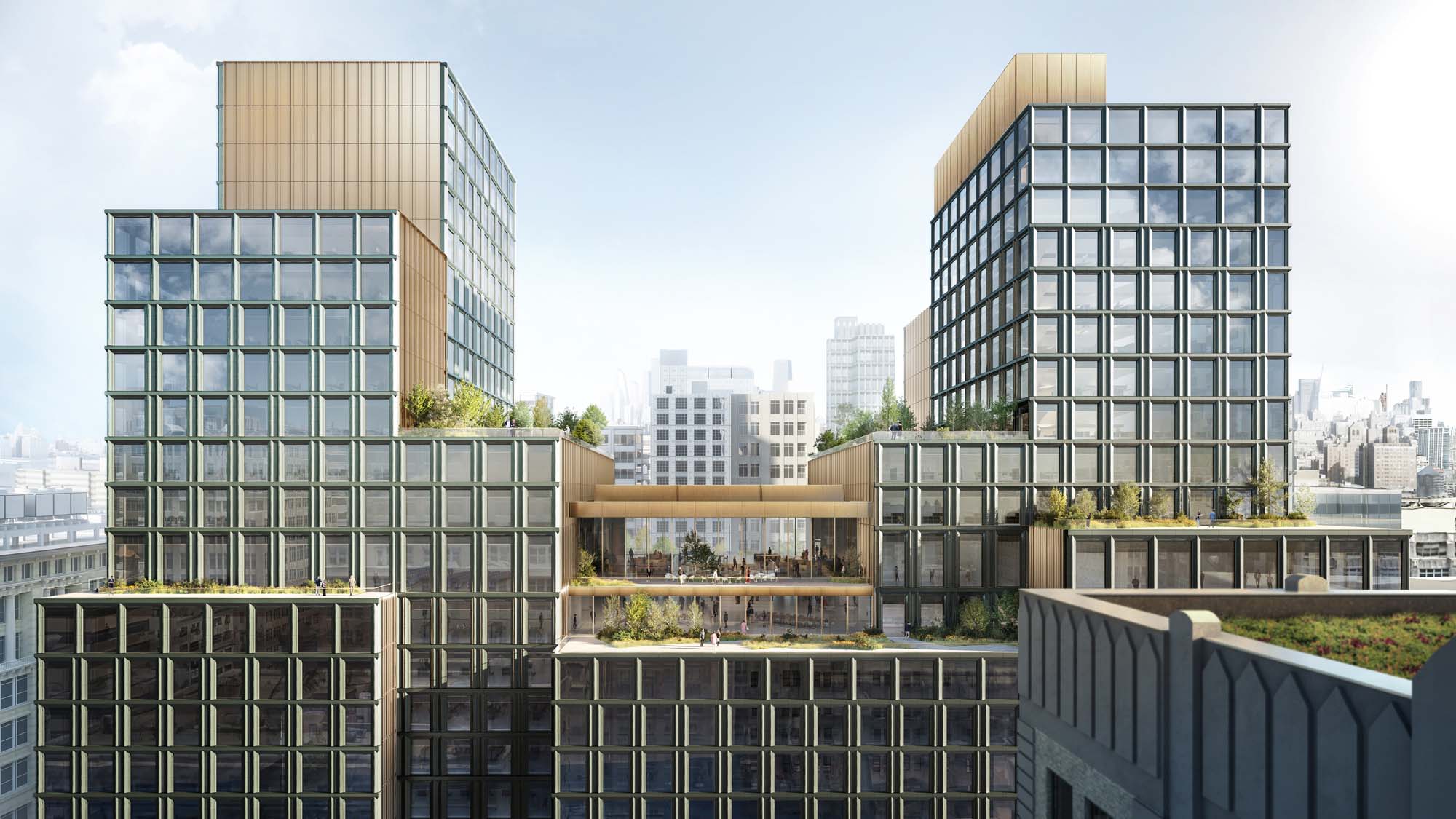
Fig.1 – Project Galaxy New York, USA
WINDTECH Consultants assessed the air quality issues at the proposed Project Galaxy development located in New York City. Simulations of the external wind, solar, temperature, odor and pollution dispersion including proposed external HVAC equipment, exhaust and inlet louvre layouts were conducted to quantitatively assess the effectiveness of the proposed design as a result of the approaching winds and thereafter the resulting external environmental conditions.

Fig.2 – Outdoor wind CFD streamlines and NOx dispersion ISO volume dispersion from high level flues and chimneys
The study involved modelling of the dispersion of gases from the boiler stack and flues, odor concentration dispersion from all low-level exhaust louvres (Fig.3) and the temperature distribution on and around the subject development
The outputs provided a detailed assessment of the potential impact of the gases and odor on the immediate surrounding areas for both ano-wind scenario and for site specific winds from the 16 wind directions identified as being the most critical.

Fig.3 – Kitchen and toilet odour concentration dispersion from façade HVAC louvers/vents
Dr O’Sullivan went on to say: “The results of the analysis for the Project Galaxy development indicated the design was effective in dispersing pollutant and odor for the more frequent wind conditions. Exhaust plumes were only seen to impede upon occupied levels of the development at minor concentrations and not reach notable levels at ground level locations.”
That being said, to achieve the most effective dispersion characteristics possible in the worst-case scenarios, measures such as below can be effective:
- Further extension of flues such that pollutants are dispersed further from the development and the chance of recirculation further minimised.
- Increase of the exit velocity of the flues and ASHP outlets to promote plume rise and deter entrainment and recirculation on rooftops.
- Increase the separation distance between the flues and louvers such that the two outlet flows may never interfere with one another.
- Increase the horizontal component of the exit angle of louvres such that a lower concentration of odorous compounds are not likely to reach trafficable areas.
Case Study: Indoor Air Quality and Pollution Dispersion
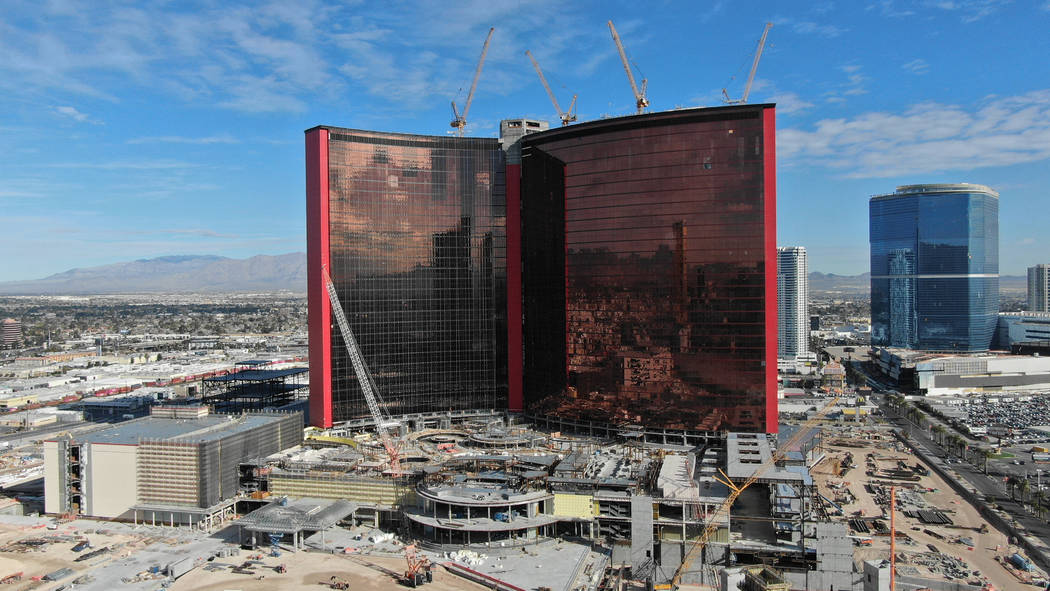
Fig.4 – Resorts World, Las Vegas, USA
The numerical modelling of the development was undertaken in three distinct parts:
- Wind Tunnel Testing:Where mean façade wind pressures were attained for critical locations on the development.
- The mean façade wind pressures from Windtech’s wind tunnel study were inputted into a numerical model to determine the stack effect induced flow rates at key areas of the region to be analysed.
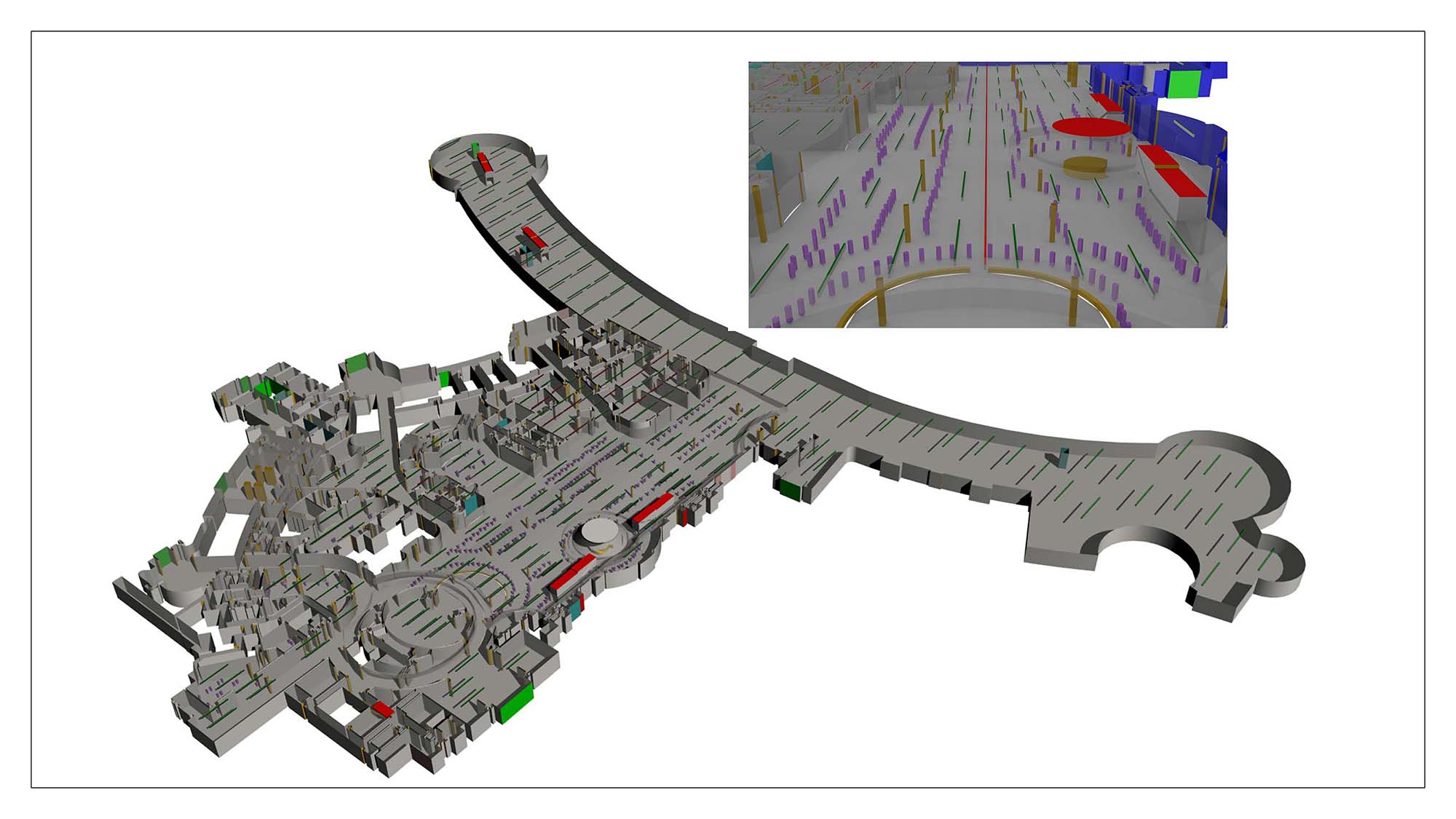
Fig.5 – 3D CFD Indoor CAD model for HVAC system and wind entry at entrances using the noted coloured boundary condition.
- CFD:The flow rates from the numerical model were utilised as boundary conditions for the CFD analysis, which was then undertaken to determine the thermal stack effects and smoke dispersion region.
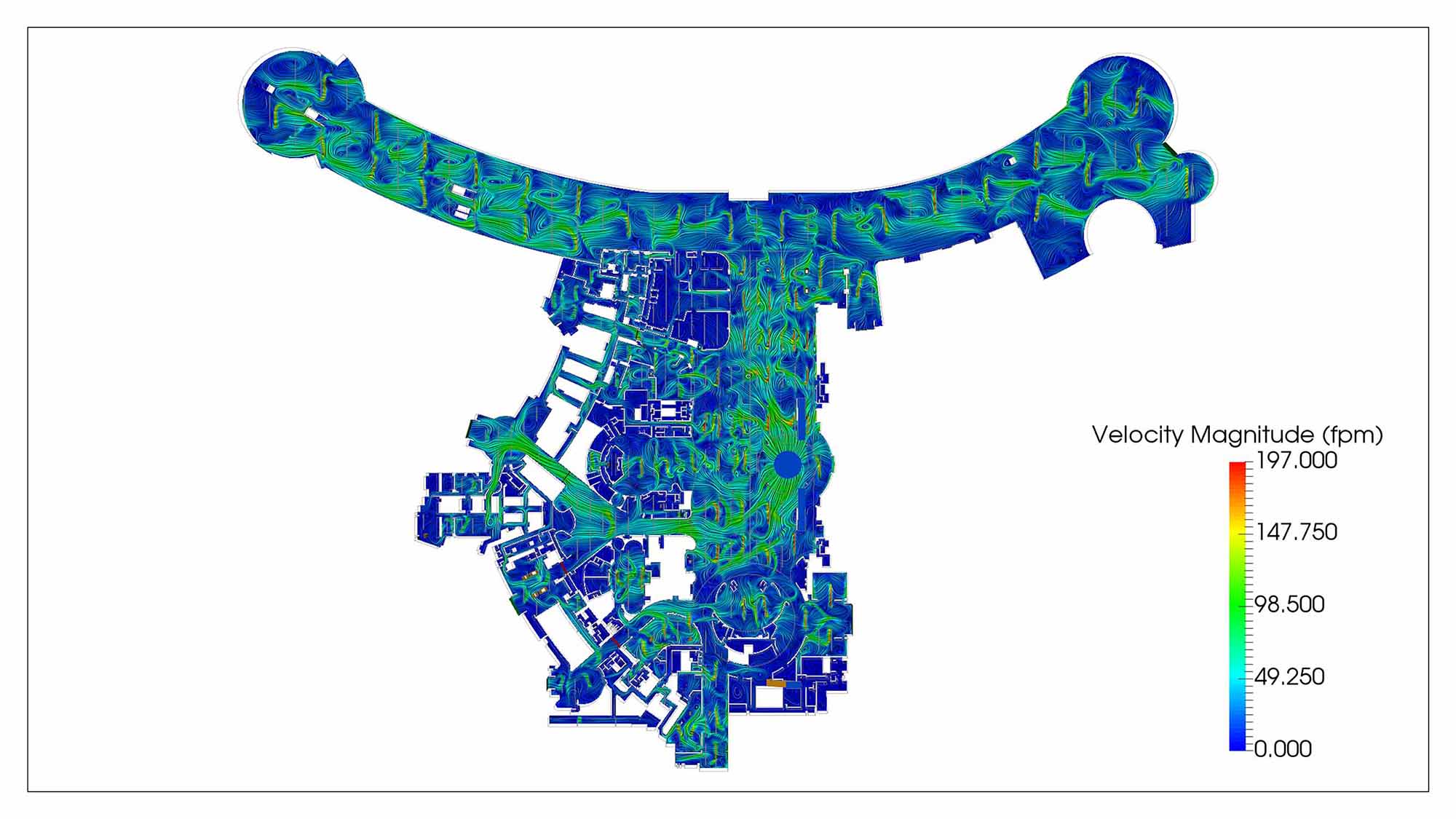
Fig.6 – Indoor air velocity distribution at occupied level on the main casino floor due to the HVAC system and relative wind entry.
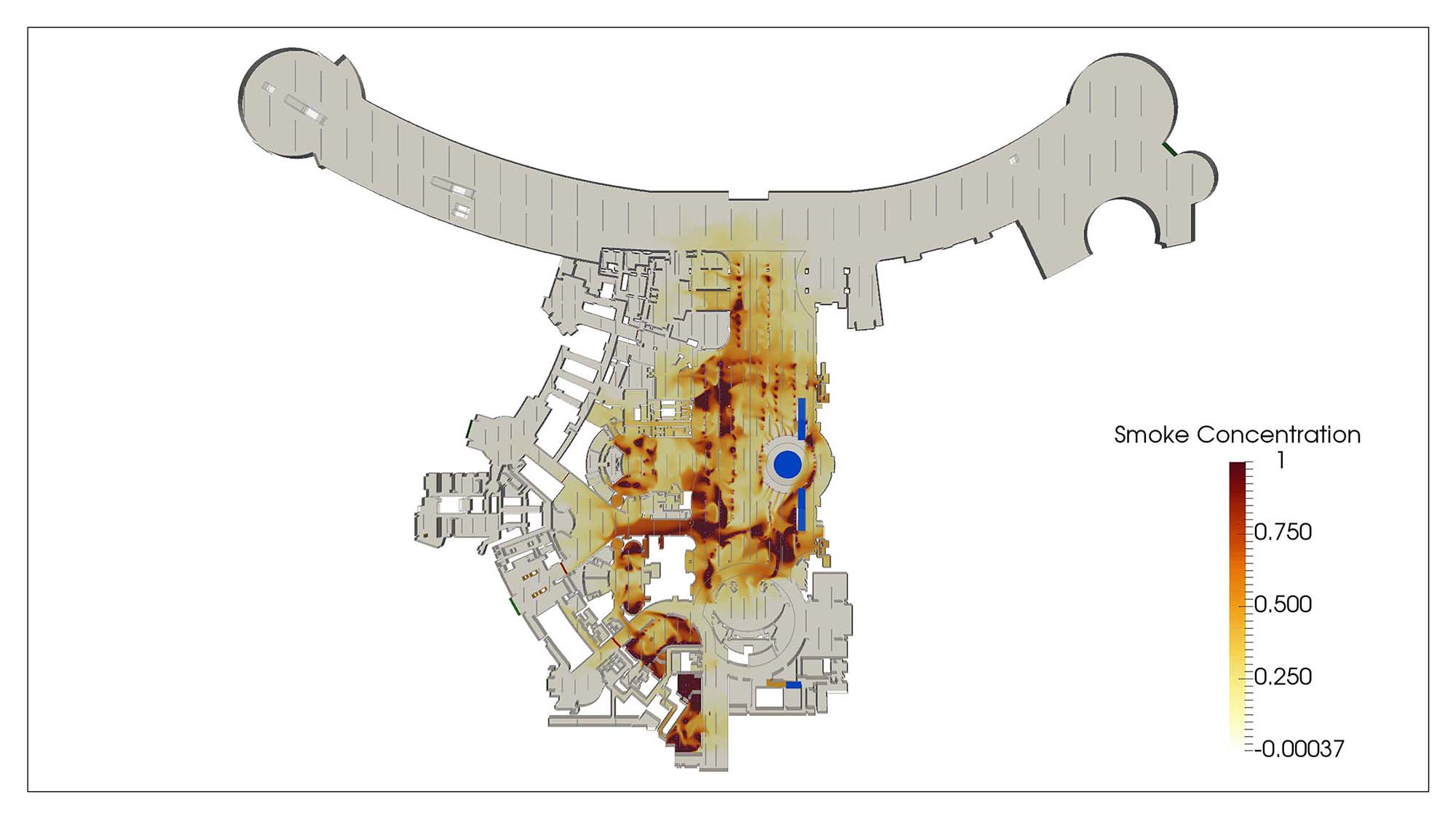
Fig.7 – Indoor dispersion of cigarette smoke as generated from the main smoking area within the Casino. The simulation accounts for the influence of the stack effect, external pressures at openings, heat loads within the building and mechanical system as well as the thermal properties of the external and internal building fabric.
According to Dr O’Sullivan: “The CFD analysis for the thermal stack effect and smoke dispersion was undertaken for the Resorts World development for both the summer and winter periods. The results of the analysis showed hotspots of high velocity in the transitional areas between the main casino floor and the hotel entrances, largely the exfiltration of wind flow through the main entrances of the casino. However, the exfiltration of the air flow within the casino space also benefited the region as it actively removed smoke pollution from the gaming floor. This was an excellent outcome as the result was a passive solution which would be a fraction of the cost of a mechanical smoke extraction system.”
This highlights the importance of not only being able to identify the issues but deliver innovative solutions which are effective in addressing the issues in a cost effective and efficient way. This is central to Windtech’s process during the life cycle of a project.
Related Articles:
Return to Main News Page








